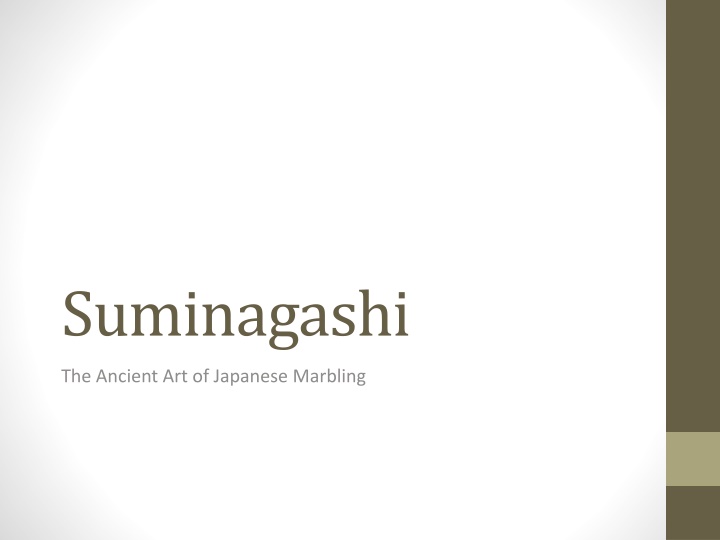
Suminagashi: The Ancient Art of Japanese Marbling Technique
Explore the ancient Japanese art of Suminagashi, a marbling technique that originated over 2,000 years ago in China and was practiced by Shinto priests in Japan. Learn about the materials, process, and unique characteristics of Suminagashi prints, considered monoprints in printmaking.
Download Presentation

Please find below an Image/Link to download the presentation.
The content on the website is provided AS IS for your information and personal use only. It may not be sold, licensed, or shared on other websites without obtaining consent from the author. If you encounter any issues during the download, it is possible that the publisher has removed the file from their server.
You are allowed to download the files provided on this website for personal or commercial use, subject to the condition that they are used lawfully. All files are the property of their respective owners.
The content on the website is provided AS IS for your information and personal use only. It may not be sold, licensed, or shared on other websites without obtaining consent from the author.
E N D
Presentation Transcript
Suminagashi The Ancient Art of Japanese Marbling
Background information Suminagashi translates to ink-floating It is the Japanese technique of decorating paper with inks It originated in China over 2,000 years ago and was practiced in Japan by Shinto priests as early as the 12thCentury You may have also seen this technique referred to as paper marbling
Japanese Sumi-e inks were originally used, dropped carefully to float on a still water surface and then blown across to form delicate swirls, after which the ink was picked up by laying a sheet of white rice paper atop the ink covered water
Materials Opaque ink will produce the most vibrant prints whereas transparent inks create a very faint image Using an absorbent paper without sizing is key so the pigment absorbs into the surface Sometime a dispersing agent will help the ink float on the surface of the water. Traditionally Japanese pine-resin was used
The final Suminagashi print is considered a MONOPRINT A monoprint is a form of printmaking that has lines or images that can only be made once. This is unlike other forms of printmaking where there would be editions of the same print.
Other examples of Suminagashi used today
